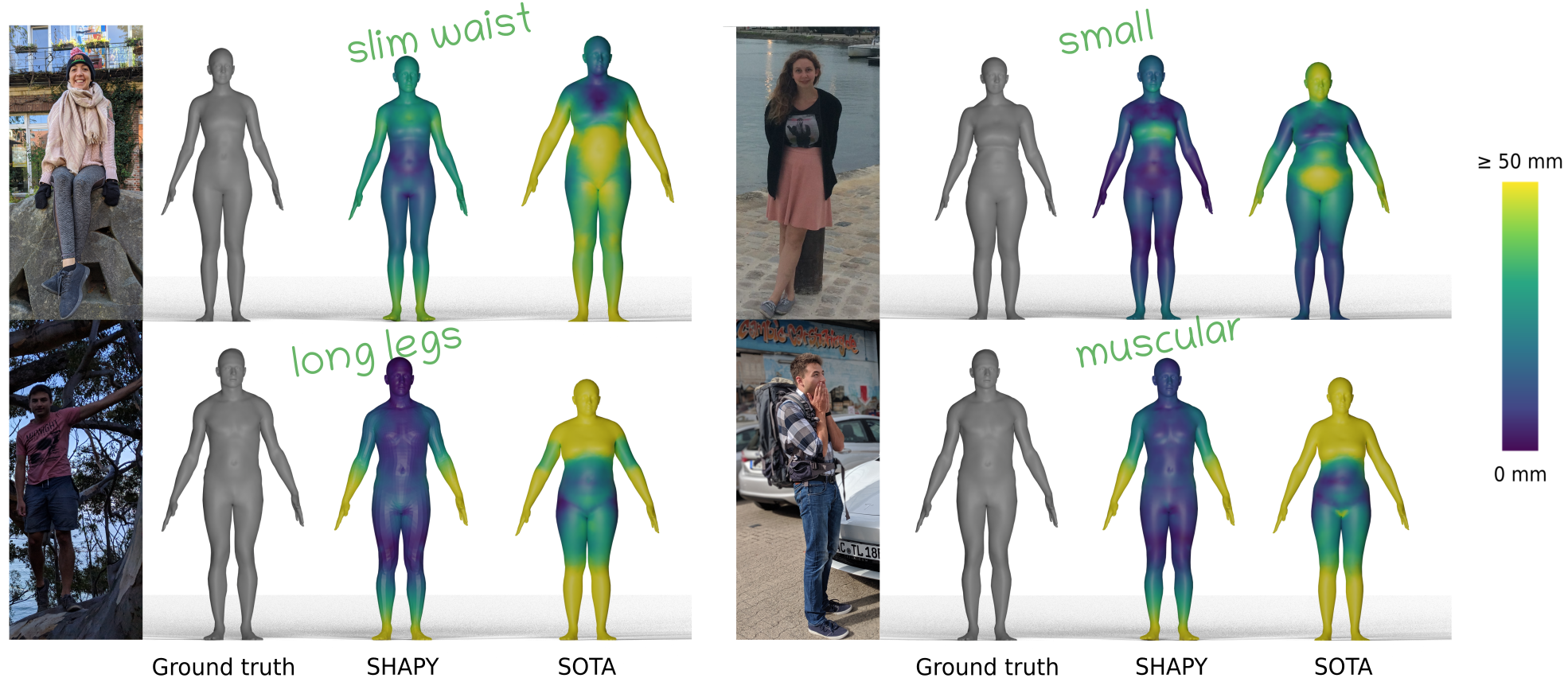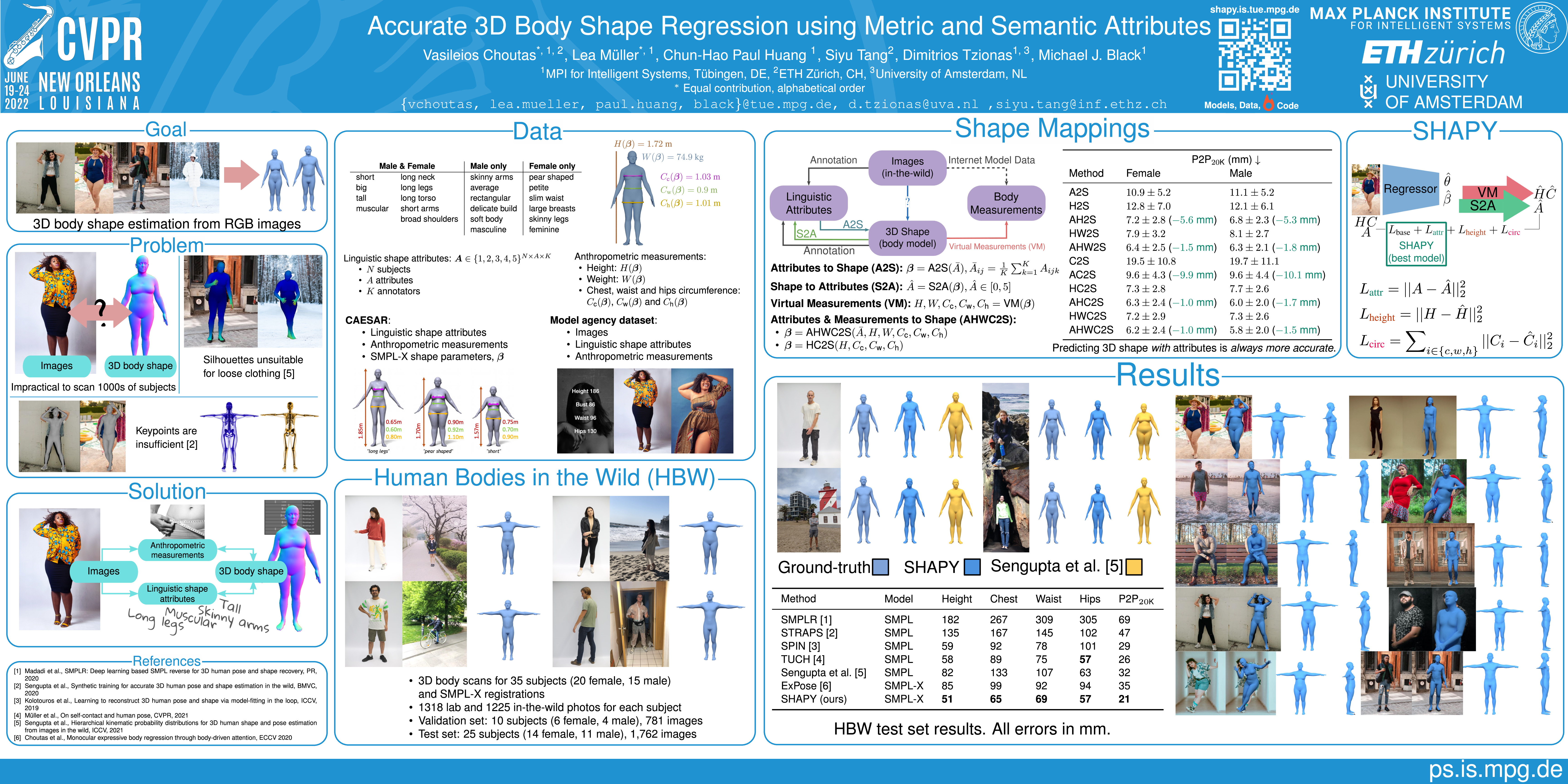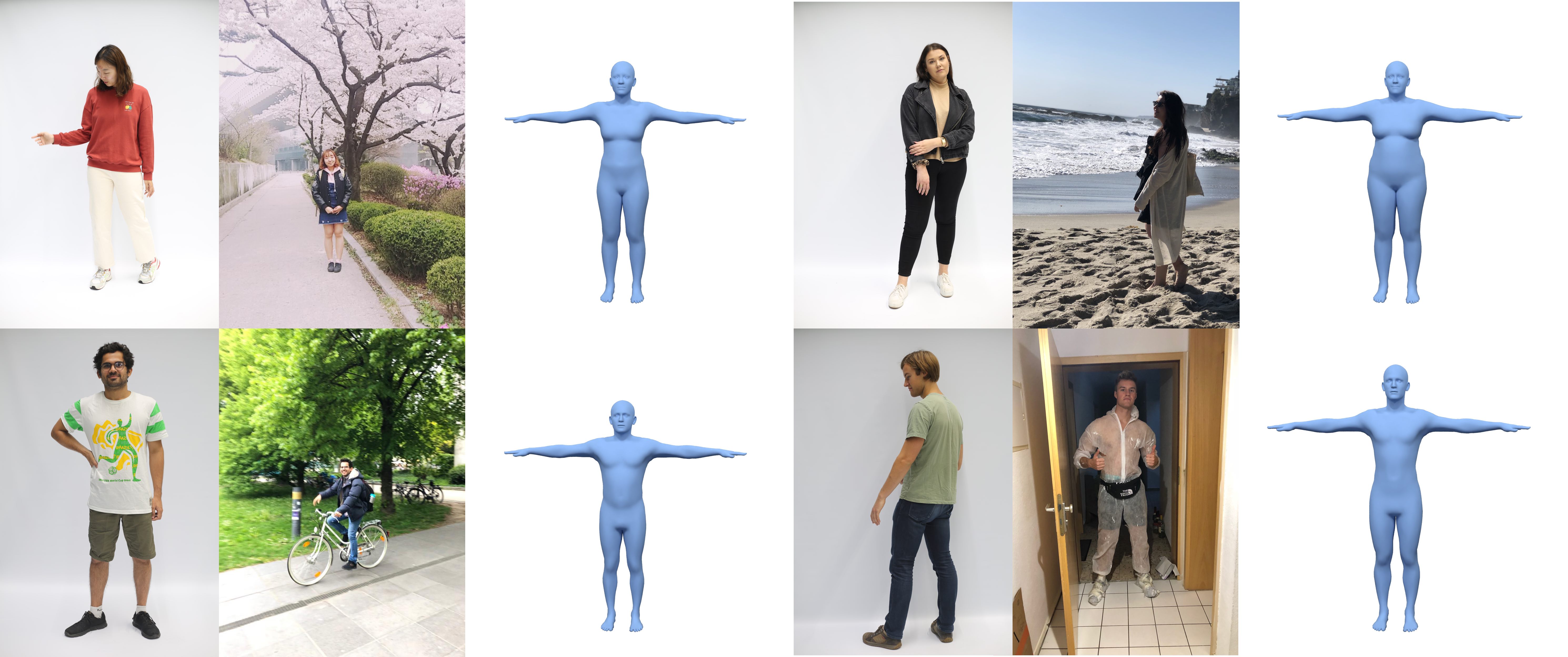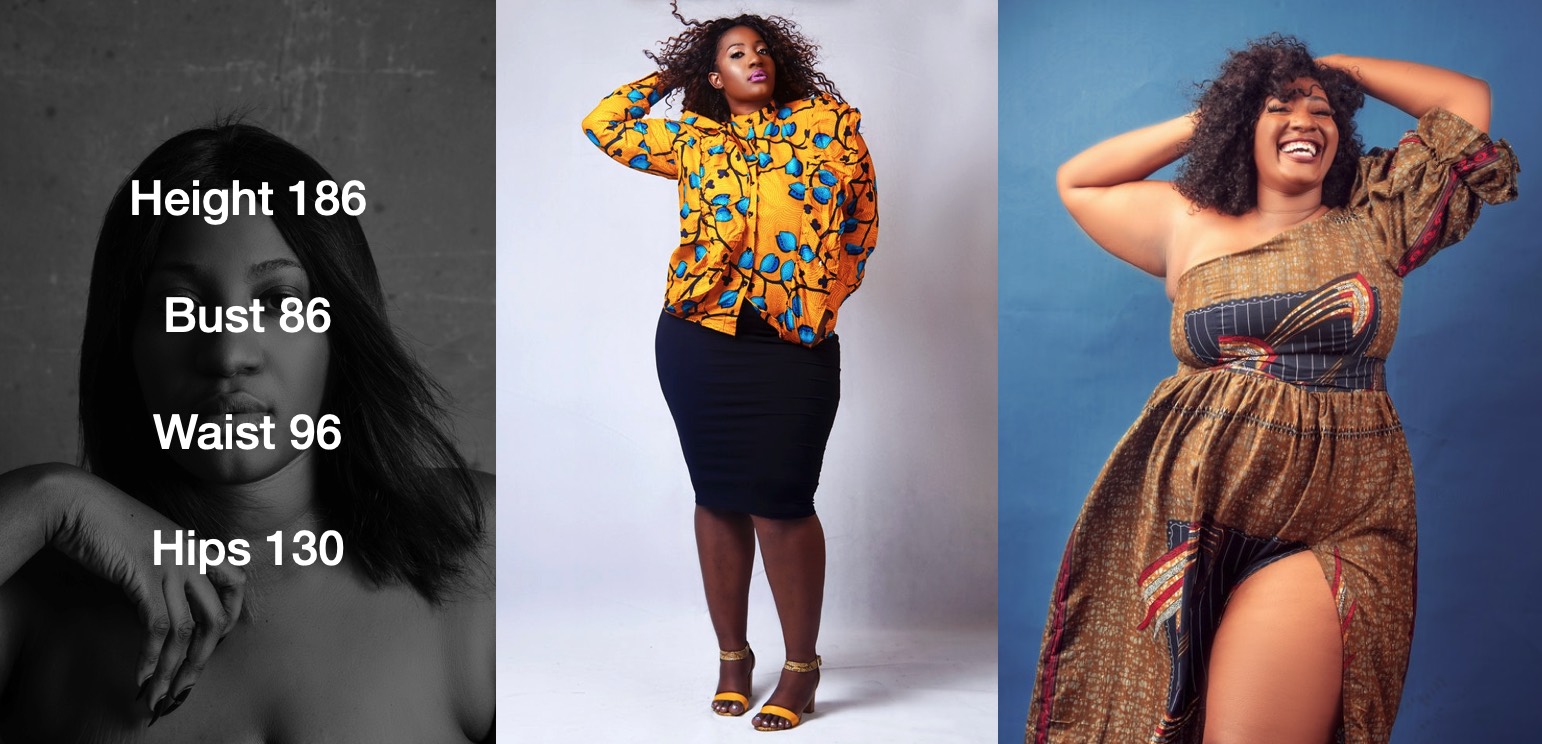Accurate 3D Body Shape Regression
using Metric and Semantic Attributes
V. Choutas*, L. Müller*, Chun-Hao Paul Huang, Siyu Tang, D. Tzionas and M. J. Black (*authors contributed equally)
Computer Vision and Pattern Recognition (CVPR) 2022, New Orleans, LA
Oral, best paper finalist

Abstract
While methods that regress 3D human meshes from images have progressed rapidly, the estimated body shapes often do not capture the true human shape. This is problematic since, for many applications, accurate body shape is as important as pose. The key reason that body shape accuracy lags pose accuracy is the lack of data. While humans can label 2D joints, and these constrain 3D pose, it is not so easy to “label” 3D body shape. Since paired data with images and 3D body shape are rare, we exploit two sources of partial information: (1) we collect internet images of diverse models together with a small set of measurements; (2) we collect semantic shape attributes for a wide range of 3D body meshes and model images. Taken together, these datasets provide sufficient constraints to infer metric 3D shape. We exploit this partial and semantic data in several novel ways to train a neural network, called SHAPY, that regresses 3D human pose and shape from an RGB image. We evaluate SHAPY on public benchmarks but note that they either lack significant body shape variation, ground-truth shape, or clothing variation. Thus, we collect a new dataset for 3D human shape estimation, containing photos of people in the wild for whom we have ground-truth 3D body scans. On this new benchmark, SHAPY significantly outperforms recent state-of-the-art methods on the task of 3D body shape estimation. This is the first demonstration that a 3D body shape regressor can be trained from sparse measurements and easy-to-obtain semantic shape attributes. Our model and data will be freely available for research.
Video
Poster

Datasets
 |
 |
| Human Bodies in the Wild (HBW) Ground truth body shape, images in the lab and wild more info ... |
Model Agency Dataset Body measurements, images, linguistic annotations more info ... |
Citing Shapy
@inproceedings{Shapy:CVPR:2022,
title = {Accurate 3D Body Shape Regression using Metric and Semantic Attributes},
author = {Choutas, Vasileios and M{\"u}ller, Lea and Huang, Chun-Hao P. and Tang, Siyu and Tzionas, Dimitrios and Black, Michael J.},
booktitle = {Proceedings IEEE Conf. on Computer Vision and Pattern Recognition (CVPR)},
year = {2022}
}
Acknowledgments
This work was supported by the Max Planck ETH Center for Learning Systems and the International Max Planck Research School for Intelligent Systems. We thank Tsvetelina Alexiadis, Galina Henz, Claudia Gallatz, and Taylor McConnell for the data collection, and Markus Höschle for the camera setup. We thank Muhammed Kocabas, Nikos Athanasiou and Maria Alejandra Quiros-Ramirez for the insightful discussions.
Disclosure
Conflict of interest disclosure for Michael J. Black March 11, 2022 MJB has received research gift funds from Adobe, Intel, Nvidia, Meta/Facebook, and Amazon. MJB has financial interests in Amazon, Datagen Technologies, and Meshcapade GmbH. While MJB was a part-time employee of Amazon during this project, his research was performed solely at, and funded solely by, the Max Planck Society.
Contact
For questions, please contact shapy@tue.mpg.de.
For commercial licensing, please contact ps-licensing@tue.mpg.de.

